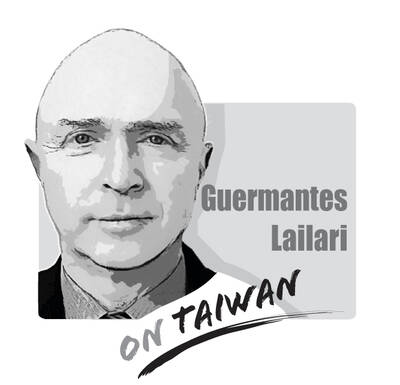Could any opener better summarize Taiwan’s current situation than the immortal words with which Charles Dickens started his novel A Tale of Two Cities: “It was the best of times, it was the worst of times”?
The Chinese Nationalist Party (KMT) and all who sail with it still insist on looking backward, whereas more progressive people are trying to look forward.
Taiwan is emerging from a tragedy to welcome the dawn of a new political era. The KMT, the architect of Taiwan’s tragedy, still believes itself to be the party that could save the nation amid the current political crisis.
If Taiwan was a normal, democratic country, should not the principle of political parties taking turns to hold the reins of power actually facilitate the country’s development along the road of democratization and normalization?
Is that not how things should be?
However, from the first transition of political power after the 2000 presidential election, the KMT has been blatantly against this principle, showing that it has never really abandoned the mindset that it is entitled to govern the country.
This mindset is a result of the party-state nature of the KMT regime. It has meant that the People’s Republic of China wrestling control of China away from the Republic of China (ROC) government was a zero-sum game, where the winner took it all. The reason for China not being able to develop a normal transition of power between parties on different ends of the political spectrum — as it is done in Europe — is that Beijing, too, is haunted by this rather outdated concept.
Between 2000 and 2008, the KMT did its best to use its power to frustrate the Democratic Progressive Party administration. The tension and fighting between the government and the opposition came from the KMT’s belief that the ROC belonged to the party and that the ancestral concept of the ROC had primacy over the actual country.
The transition of power in 2000 gave the KMT an opportunity to reinvent itself, an opportunity to shake off the party-state mindset and turn itself into a democratic political party. Evidently, it had no intentions of doing such a thing. The KMT presidential candidate at the time, former vice president Lien Chan (連戰), in his capacity as party chairman, joined forces with the Chinese Communist Party (CCP) — which had previously overthrown and ousted the KMT and is still trying to annex Taiwan as part of its own territory — in the misguided and pernicious hope that he could harness the CCP’s power to deal with his political rivals at home.
Then came President Ma Ying-jeou (馬英九), who brought the party back to power, but did not make use of this new opportunity either. After gaining power, he rather disingenuously embarked on a policy of getting even closer to China, and the political, economic and cultural difficulties he has brought on Taiwanese due to the excessive links with Beijing have brought his own party close to collapse.
The cries that are being heard in Taiwan — saying that all will be lost unless the KMT folds — demonstrate that the colonial party-state system of the KMT is, indeed, falling apart.
Taiwan has at last reached a crossover between the fortunes of party-state domination and the country working to rebuild itself. This is the “golden cross” moment where Taiwan stands up to the KMT.
It is time Taiwanese set sail and left the KMT and its reactionary ways behind. This is a historical imperative.
Lee Min-yung is a poet.
Translated by Paul Cooper

“History does not repeat itself, but it rhymes” (attributed to Mark Twain). The USSR was the international bully during the Cold War as it sought to make the world safe for Soviet-style Communism. China is now the global bully as it applies economic power and invests in Mao’s (毛澤東) magic weapons (the People’s Liberation Army [PLA], the United Front Work Department, and the Chinese Communist Party [CCP]) to achieve world domination. Freedom-loving countries must respond to the People’s Republic of China (PRC), especially in the Indo-Pacific (IP), as resolutely as they did against the USSR. In 1954, the US and its allies
A response to my article (“Invite ‘will-bes,’ not has-beens,” Aug. 12, page 8) mischaracterizes my arguments, as well as a speech by former British prime minister Boris Johnson at the Ketagalan Forum in Taipei early last month. Tseng Yueh-ying (曾月英) in the response (“A misreading of Johnson’s speech,” Aug. 24, page 8) does not dispute that Johnson referred repeatedly to Taiwan as “a segment of the Chinese population,” but asserts that the phrase challenged Beijing by questioning whether parts of “the Chinese population” could be “differently Chinese.” This is essentially a confirmation of Beijing’s “one country, two systems” formulation, which says that
Indian Prime Minister Narendra Modi arrived in China yesterday, where he is to attend a summit of the Shanghai Cooperation Organization (SCO) with Chinese President Xi Jinping (習近平) and Russian President Vladimir Putin today. As this coincides with the 50 percent US tariff levied on Indian products, some Western news media have suggested that Modi is moving away from the US, and into the arms of China and Russia. Taiwan-Asia Exchange Foundation fellow Sana Hashmi in a Taipei Times article published yesterday titled “Myths around Modi’s China visit” said that those analyses have misrepresented India’s strategic calculations, and attempted to view
When Chinese President Xi Jinping (習近平) stood in front of the Potala Palace in Lhasa on Thursday last week, flanked by Chinese flags, synchronized schoolchildren and armed Chinese People’s Liberation Army (PLA) troops, he was not just celebrating the 60th anniversary of the establishment of the “Tibet Autonomous Region,” he was making a calculated declaration: Tibet is China. It always has been. Case closed. Except it has not. The case remains wide open — not just in the hearts of Tibetans, but in history records. For decades, Beijing has insisted that Tibet has “always been part of China.” It is a phrase